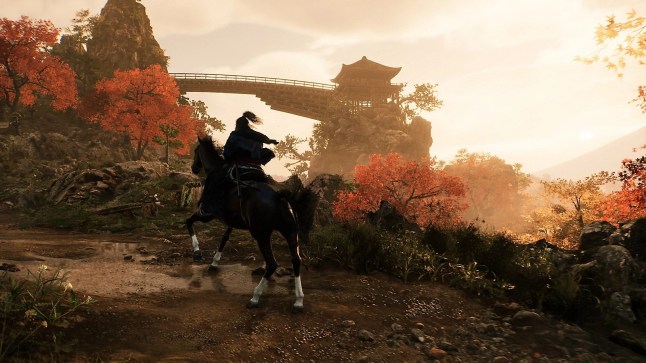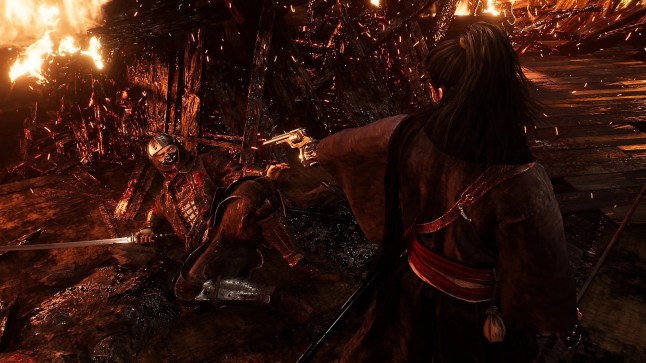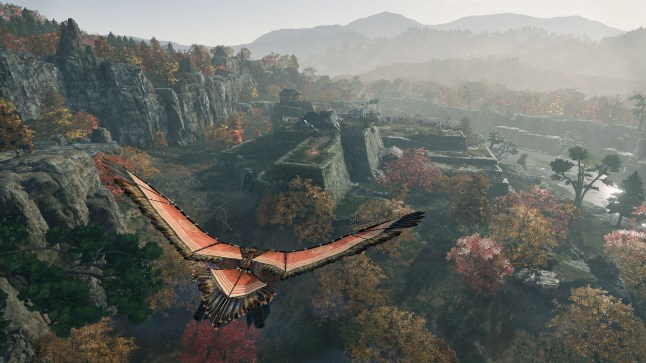
The PS5 gets a second open world samurai game but how does this new title, from the makers of Nioh, compare to Ghost Of Tsushima?
Although it’s set during a very different time period, the fact that Rise Of The Rōnin is coming out at the same time as the excellent Shōgun TV series, is clearly to the game’s benefit. The show is primarily an American production, but two of its producers are Japanese and it has been praised for its authenticity. The same was said of 2020 PlayStation 5 exclusive Ghost Of Tsushima but the fact is that despite publisher Sony being Japanese the game was made by an American company based in Washington.
Ghost Of Tsushima was a good game, and the historical and cultural elements were accurate, but it didn’t feel like something a Japanese developer would make. Japan may have only limited cultural influence in terms of live action film and TV but its importance to the video games world cannot be understated. And yet there are very few big budget games, with a realistic setting, that are set in Japan.
Rise Of The Rōnin is a rare exception and while its open world environment is heavily influenced by Western titles the combat, mission design, and storytelling feels uniquely Japanese. The end result is a game that is less concerned with realism and simulation and more comfortable with bending historical accuracy to suit the gameplay and the whims of the developer.
The game is set in the late 19th century, a decade or so before the events portrayed (very loosely) in the movie The Last Samurai. Western influence in Japan is increasing and the game’s first mission involves trying to assassinate the American naval commander in charge of ending Japan’s economic and cultural isolationism.
That’s a lot further forward in history than usual for samurai media (Like A Dragon: Ishin! is one of the few other games set at the same time) but it’s interesting because rural areas are still very traditional and yet there are many Western looking buildings in the game’s version of Yokohama. More importantly, in terms of gameplay, guns are commonplace and despite what The Last Samurai implied samurai were perfectly happy to use them.
The basis of the plot is rooted firmly in historical fact but despite flirting with themes of nationalism, colonialism, and technological advancement the storytelling is, like most Team Ninja games, not very engaging and has a surprisingly frivolous tone at times.
Your player character is part of a fictional anti-shogunate faction called the Veiled Edge, that relies on its elite assassins all being twins. There are many story choices to make as you progress, especially in terms of which side you back in the Boshin War, and interestingly you’re given the chance to go back and choose a different path if you later regret your decision.
Loyalty is a key part of Rise Of The Rōnin and works on several levels, as you forge bonds with individuals, different settlements, and various political organisations. Who you choose as friends impacts the abilities and equipment you have access too and, unlike a lot of the other open world content, is interestingly unique.
As a big budget triple-A Sony exclusive, one of the key appeals of Ghost Of Tsushima was its graphics and presentation, and that’s something Rise Of The Rōnin cannot compete with. At best it looks like a mid-budget last gen game and apart from some nice lightning effects, and the general beauty of the Japanese landscape, it’s visuals are not especially impressive.
Where it easily exceeds Ghost Of Tsushima is in terms of its combat, which is much more nuanced and heavily based on the systems in Nioh. In turn, Nioh was inspired by Dark Souls and as such Rise Of The Rōnin also features what are essentially bonfires, that respawn lower level bad guys when you use them to replenish your supplies. Plus, when you die you have to go back to the enemy that killed you to recover your stuff.
Rise Of The Rōnin isn’t as difficult as Dark Souls, or the ninja-themed Sekiro, but it’s certainly not an easy game either, especially when it comes to the bosses. The combat involves far more than just light and heavy attacks and, like most Soulslikes, is based around a stamina meter (called Ki). It’s especially important in Rise Of The Rōnin as without it you can’t attack at all, although it recharges very quickly.
Ki is used to encourage you to consider actions more carefully, and avoid just mashing the attack buttons, with the importance of blocking, dodging, and countering, underlining that fact further. As in Sekiro, enemies use exactly the same system as you and so what you really want to do is decrease their Ki, so that you can then perform a devastating attack that in many cases can take them out in one go (often separating heads or limbs from their body).

There’s a wide range of different secondary weapons, including pistols and shurikens, as well as bows and longer-range rifles. Special martial skills take a bit of a wind up but in many cases are near impossible to avoid, which is also true when enemies perform theirs on you.
The game goes even further in terms of combat options, by allowing you to switch between two weapons and multiple stances at the press of a button. Some fighting styles and weapons are better against others, and this is often where your co-op companion comes in, if they have a weapon or fighting style that’s better suited to the current opponent.
If you’re fighting with an AI ally you can switch control to them whenever you want but you can also call in up to two other human players to help. This was hard to test pre-launch but works similarly to Elden Ring, as you summon in help for discrete missions rather than just having other players follow you around the whole time.
Many standalone missions are a lot more open-ended than a simple boss fight, especially since you can choose a ninja-esque character class when you start, or simply choose to specialise as one once you start playing. Avoiding enemies and performing stealth kills is a perfectly legitimate way to get past most obstacles, with a handy grappling hook available right from the start, no matter which class you start as.
Other useful equipment is acquired as you progress, including the obviously fictional hang-glider that nevertheless makes traversal more enjoyable and less time-consuming. Ghost Of Tsushima was very similar to an old school Assassin’s Creed in structure but Rise Of The Rōnin is more mission-based. That means it embraces the open world bloat of other Ubisoft style games, as the game constantly tries to distract you with trivial side quests.
Many players will be used to avoiding, or embracing, that by now, but what adds additional frustration to Rise Of The Rōnin is the awful loot system, which sees you gain a new weapon, item, resource, or piece of clothing with almost every defeated enemy. That may seem good at first, but it soon becomes a chore to equip and use them all, as you sort through dozens of near identical items for a trivial improvement in stats or semi-helpful buffs.

This was also a problem in Nioh but in Rise Of The Rōnin clothing proves especially silly, as the most useful items are often in completely different styles. You are given bonuses for wearing all the clothes in a particular set but the chances of finding them all quickly is remote, which leaves you wandering around the game world looking like you’ve just run through a charity shop putting clothes on at random.
Despite the novelty of the setting, originality is not a key virtue for Rise Of The Rōnin. The open world gameplay is very familiar and while the combat is excellent, it’s also not very different to Nioh 1 and 2. Those two games were never as successful as they deserved to be though, so perhaps Rise Of The Rōnin’s more grounded setting will earn it a wider audience.
More Trending
If nothing else it’s an interesting example of the varying approaches to game design in different countries, with a Japanese-made game influenced by the success of the American-made Ghost Of Tsushima. Although it’s notable that the worst parts of Rise Of The Rōnin are those elements borrowed most obviously from other Western titles.
Both games are different enough that they can be enjoyed equally, with enough flaws in each that it’s impossible to say that one is unequivocally better than the other. If Rise Of The Rōnin had cut down on the open world bloat, and its exhausting loot system, it would’ve had a clear advantage but unfortunately it doesn’t quite rise to those heights.
Rise Of The Rōnin review summary
In Short: An enjoyable counterpart to Ghost Of Tsushima, with some truly excellent combat, but the bloated open world elements can often suffocate your enjoyment.
Pros: Fantastic combat, with plenty of nuance and options in terms of weapons and moves. Fun co-op features, with both real players and the AI. Interesting setting, even if the storytelling is weak.
Cons: As good as it is, the combat is very similar to Nioh. The open world design is extremely generic, with lots of bloat. Dreadful loot system.
Score: 7/10
Formats: PlayStation 5
Price: £69.99
Publisher: Sony Interactive Entertainment
Developer: Team Ninja
Release Date: 22nd March 2024
Age Rating: 18
Email gamecentral@metro.co.uk, leave a comment below, and follow us on Twitter.
MORE: Rise Of The Rōnin preview – open world ninja
MORE: Rise Of The Rōnin cancelled in South Korea following game director’s controversial comments
MORE: Nioh developer unveils Rise Of The Ronin as new PS5 exclusive
Follow Metro Gaming on Twitter and email us at gamecentral@metro.co.uk
To submit Inbox letters and Reader’s Features more easily, without the need to send an email, just use our Submit Stuff page here.
For more stories like this, check our Gaming page.













